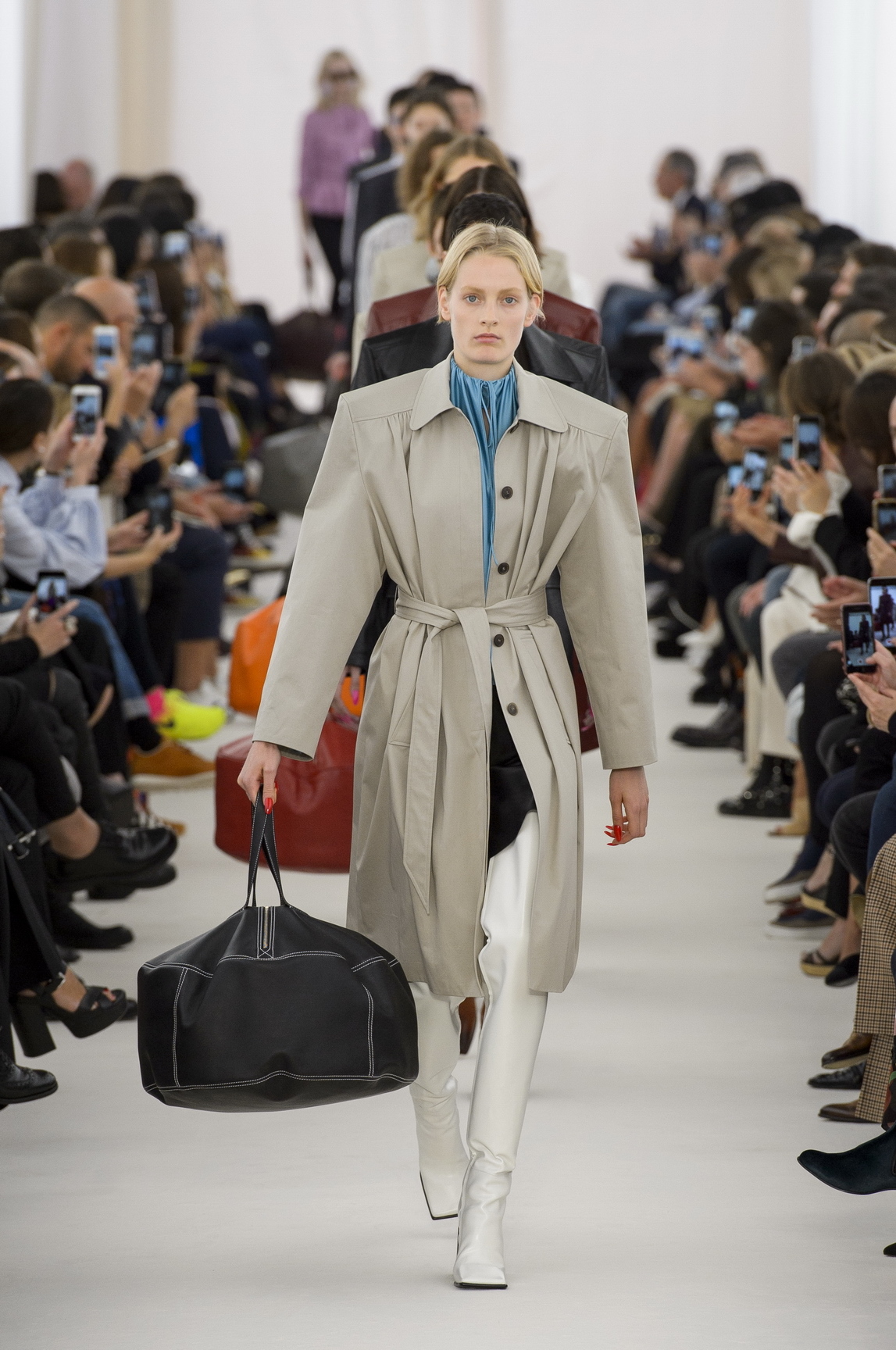Glamour. It’s one of those shape-shifting words, as comfortable on the front page of a cheesy West German post order catalogue circa 1989 as it is on a Roberto Cavalli press release anno now. If the outstanding Balenciaga spring/summer 17 collection had been a TV commercial in the 80s — likely starring Brigitte Nielsen looking leggy in those red spandex stiletto leggings — that word would have been whispered dramatically at the end: “Glamour!” Demna Gvasalia was in his early teens when he first got his hands on a copy of Italian Vogue. He sat there in war-torn Abkhazia in his native Georgia, flicking through its pages and salivating over a red Valentino ball gown. It was the early 90s, after the fall of the Iron Curtain, but while the communists’ censorship had collapsed, cultural access was still sparse. The post-Soviet boy couldn’t believe his own eyes, and he fell in love with the glamour that defined fashion in that moment in time — crazy in love — to the point of obsession. “It was very fetish,” he said Sunday morning, after a genius sophomore Balenciaga collection that could have been lifted from the more perverted corners of Krystle Carrington’s wardrobe on Dynasty.
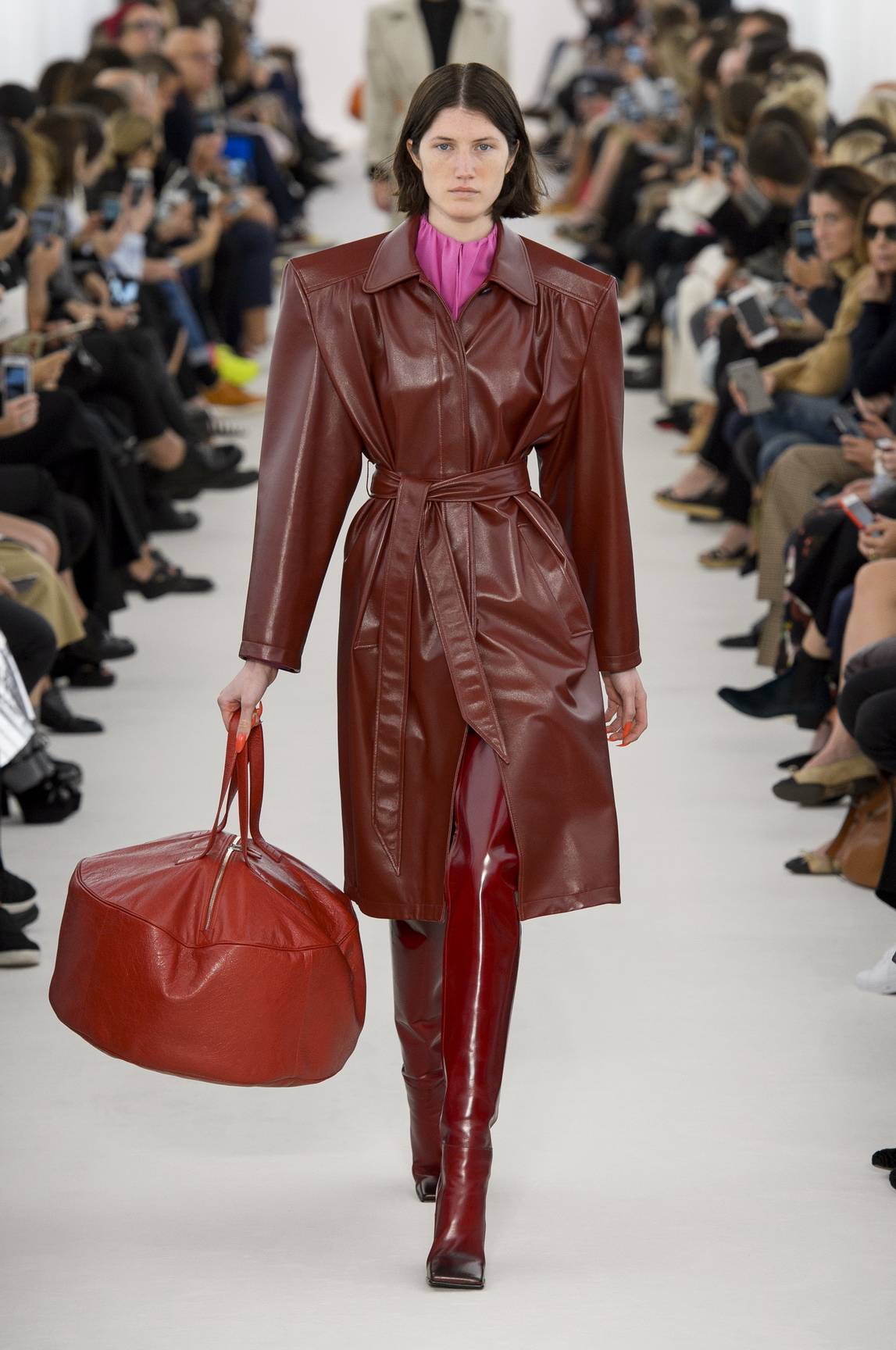
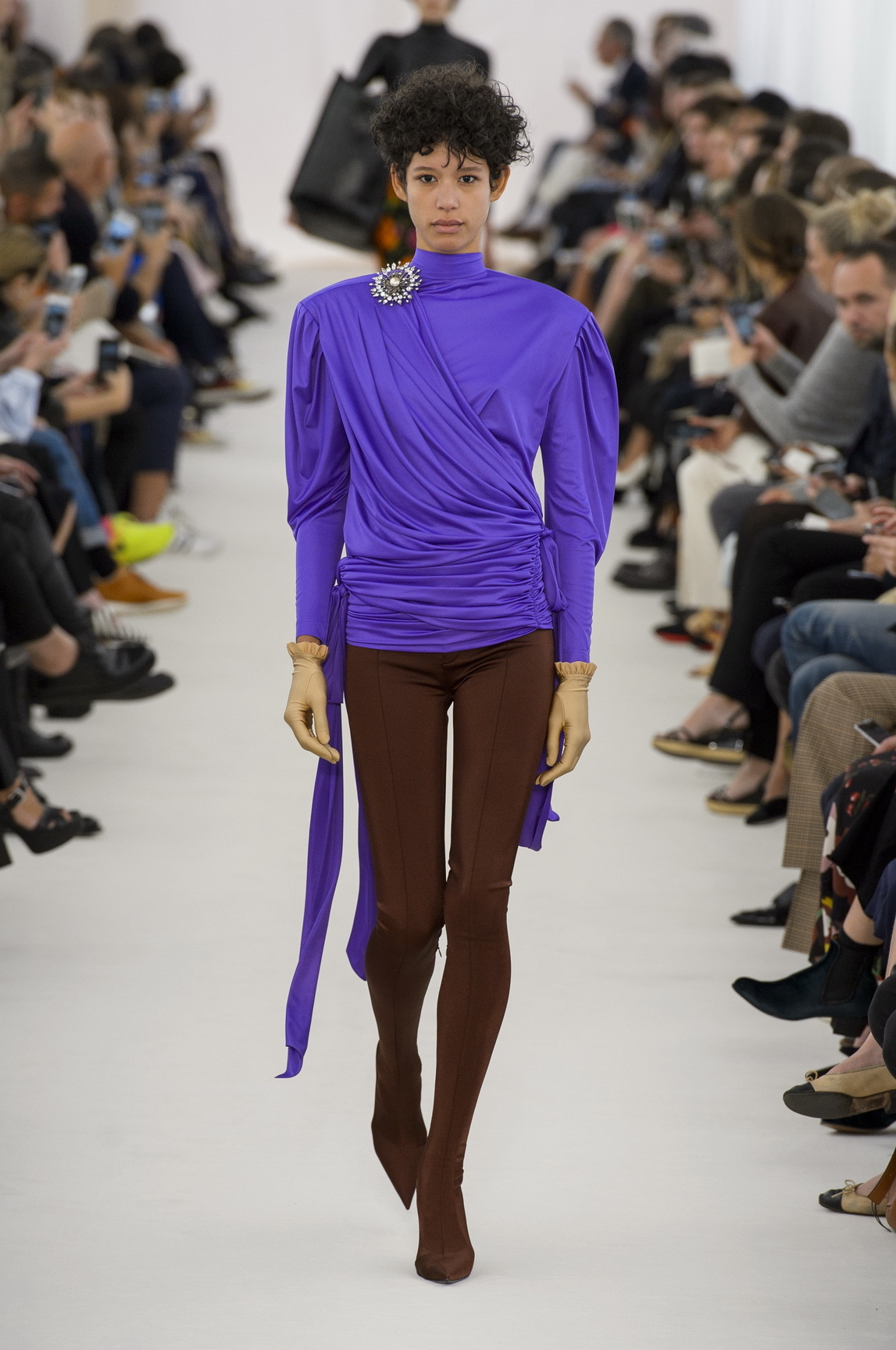
“A parallel between couture and fetish, and how obsessive it can be,” Demna continued, and you couldn’t help but think how the sensory overload of those glamorous 80s and early 90s had affected his young mind once he was let loose in the glossy pages of magazines like Burda — the fashion bible of Germany where his family eventually moved — and in TV shows like Dynasty, which fetishized that 80s couture idea of glamour to the point of vulgarity. “We created a new shoulder pad that actually keeps the shoulder line up, but it’s completely empty. So you have this flatness in the profile, which makes it very elegant and feminine, and this kind exaggerated boxy shape in the front. The shoulder and the shoes are something very sharp.” Demna said, in words that might as well have been those of a fabulous couturier in the 80s. (‘Shoulder pads’ is not a term often heard backstage in this day and age.) He perfected every garment and then he perfected it again — and again and again — like the perfectionist fetishist he is, getting totally lost in the immaculate élan of his work and the classical superior craftsmanship the Vetements designer now has access to at Balenciaga.
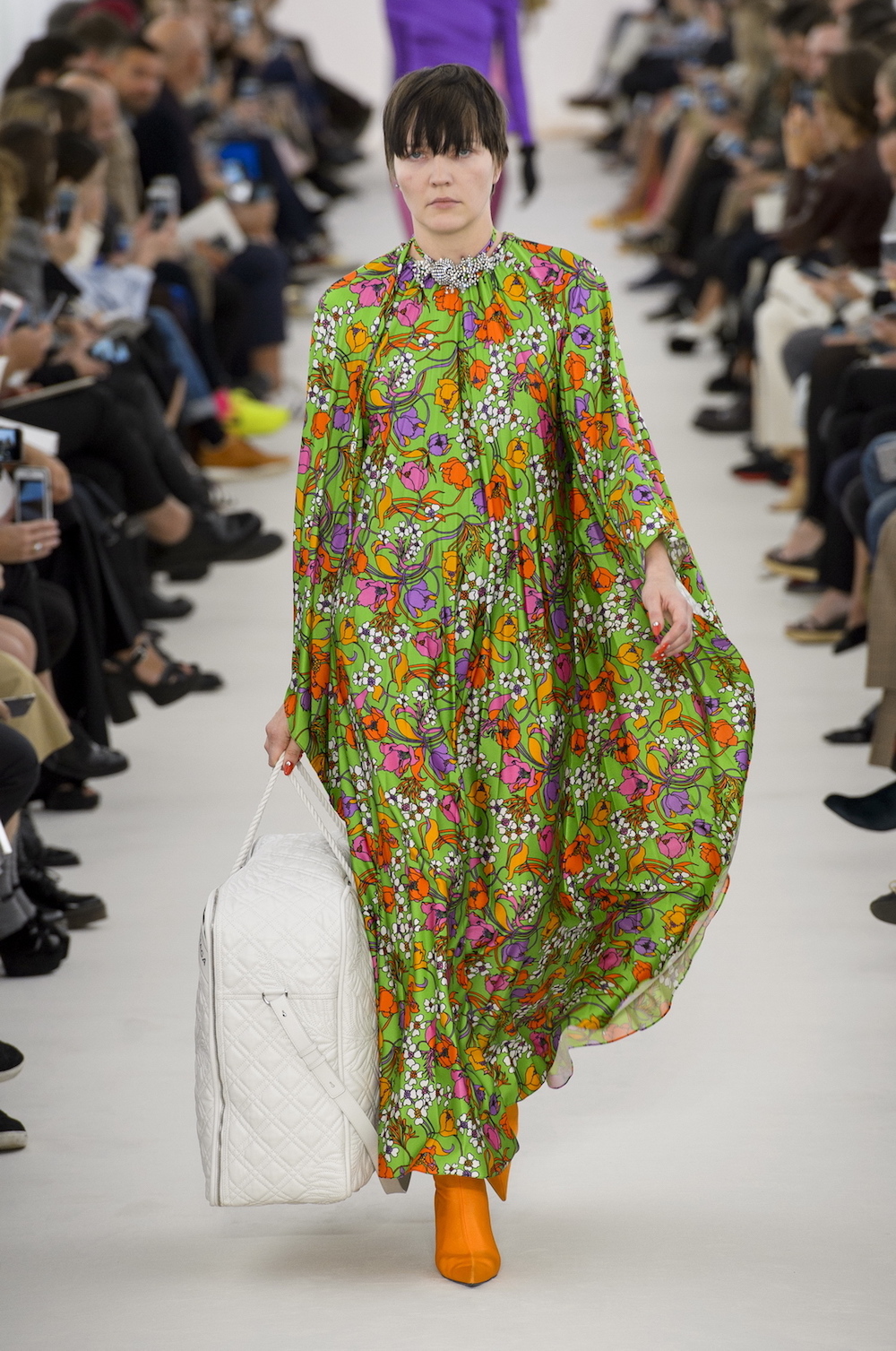

“The way the garments were made, it was so perfect, so beautiful it almost made me cry,” his Russian brother-in-law said after the show, and only pure glamour could have that effect on a boy of Demna’s generation. He worked with spandex (“invented in 58 when Cristóbal Balenciaga invented gazar — he might have used it as well,” he noted) in heeled boots that transformed into leggings, some sumptuously colored, other covered in florals taken from 50s swimwear of the Balenciaga archives. Demna iced his elongated race horse bodies with formidably shouldered power coats, some nipped in at the waist, with Krystle Carrington’s draped baby blue silk top, and eventually more seedy outerwear numbers such as a condom-like cape and a black latex coat — a nod, perhaps, to the oversexed dressing of some of the women he saw in the Eastern Bloc in the early 90s, whose take on the glamour of the time was expressed in over-the-top sexiness; too much of everything. And he scored the whole thing with corny saxophone classics: department store versions of the hits that filled his early teen years, including George Michael’s “Careless Whisper” and Whitney Houston’s “I Will Always Love You.”
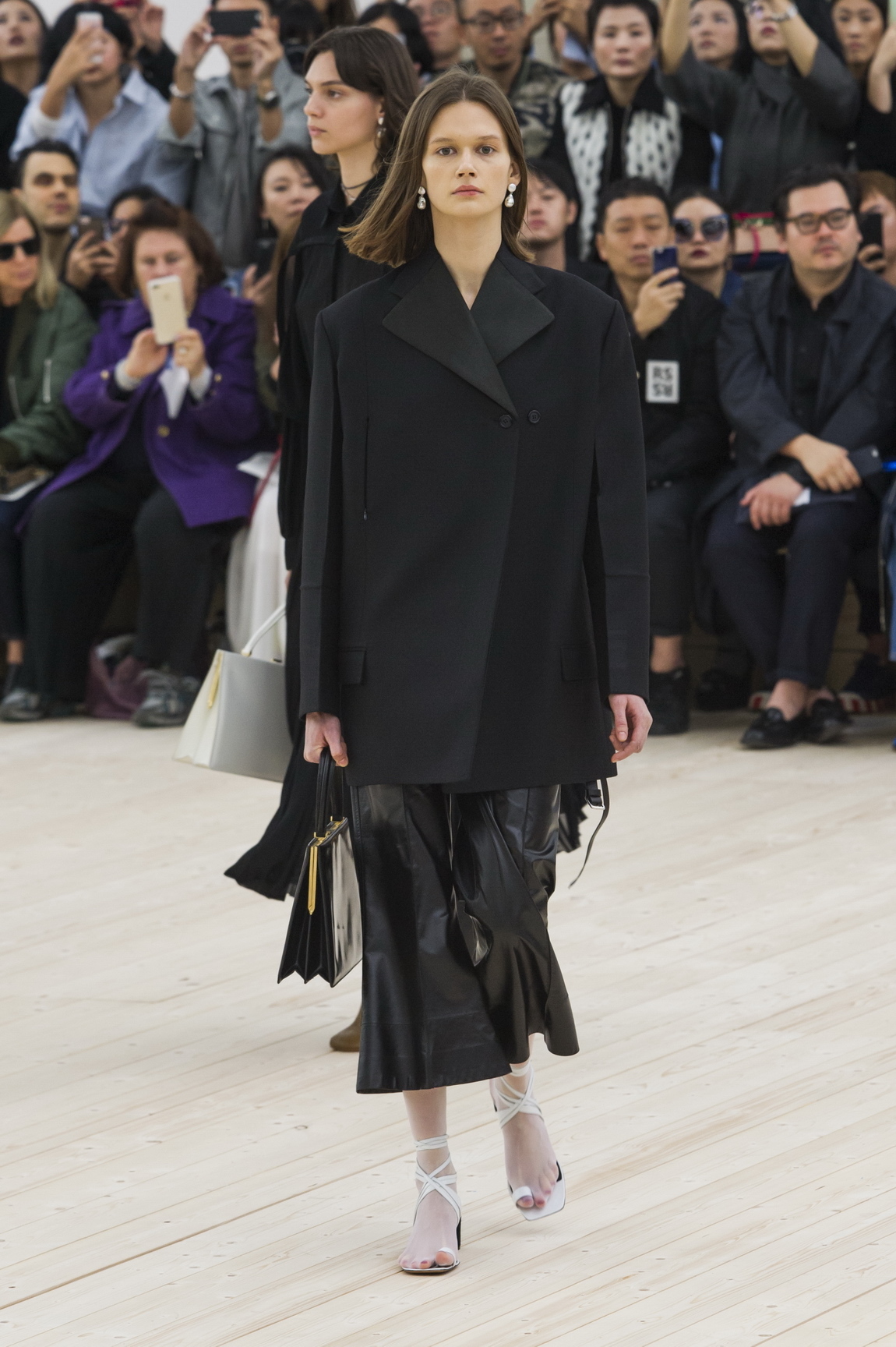
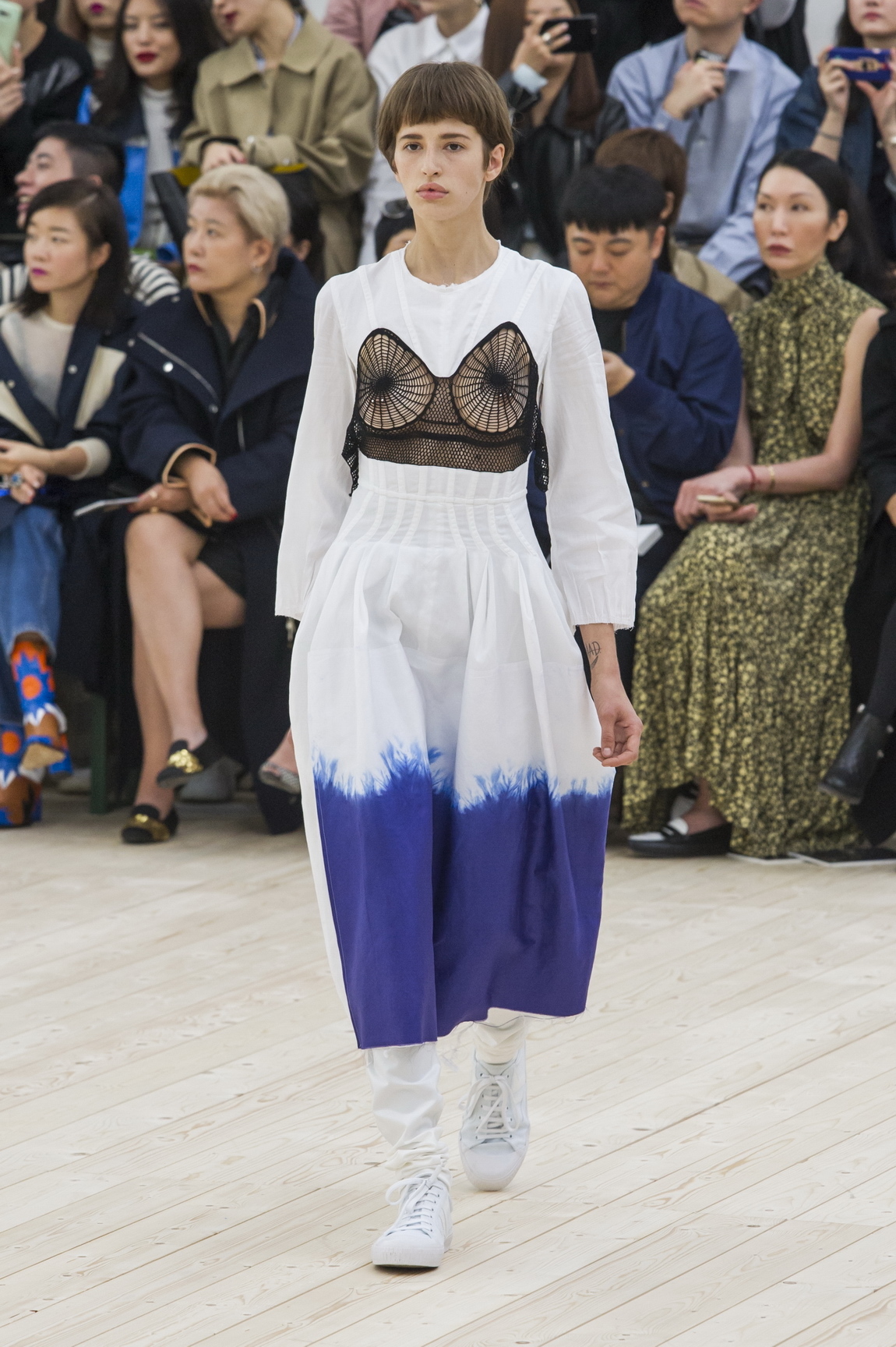
It was the dream of glamour, like those 80s and early 90s commercials and soap operas and Vaseline-lensed Danielle Steele TV movies, elevated to couture perfection. For his second collection at Balenciaga — a notoriously hard undertaking following any applauded debut — Gvasalia went way beyond expectation, proving that he’s not only able to move things along from season to season but also find unexplored territory in his somewhat nostalgic frame of reference. When you’re this good it’s not about hype — it’s about recognition. The influence of Demna’s aesthetic in fashion has been evident around the fashion capitals for seasons now, and on Sunday afternoon there were even hints of the Vetements effect at Céline where Phoebe Philo gave oversized tailoring and flouncy Victorian dresses her own treatment in a collection defined by her collaboration with artist Dan Graham, who also built the curvy screen set. It was intellectual glamour for the women, who love Céline — part cool, part chic, but never romantic. Those customers — the glamorous romantics — found a home in Valentino long ago, just like their fetishy counterparts, Demna included.
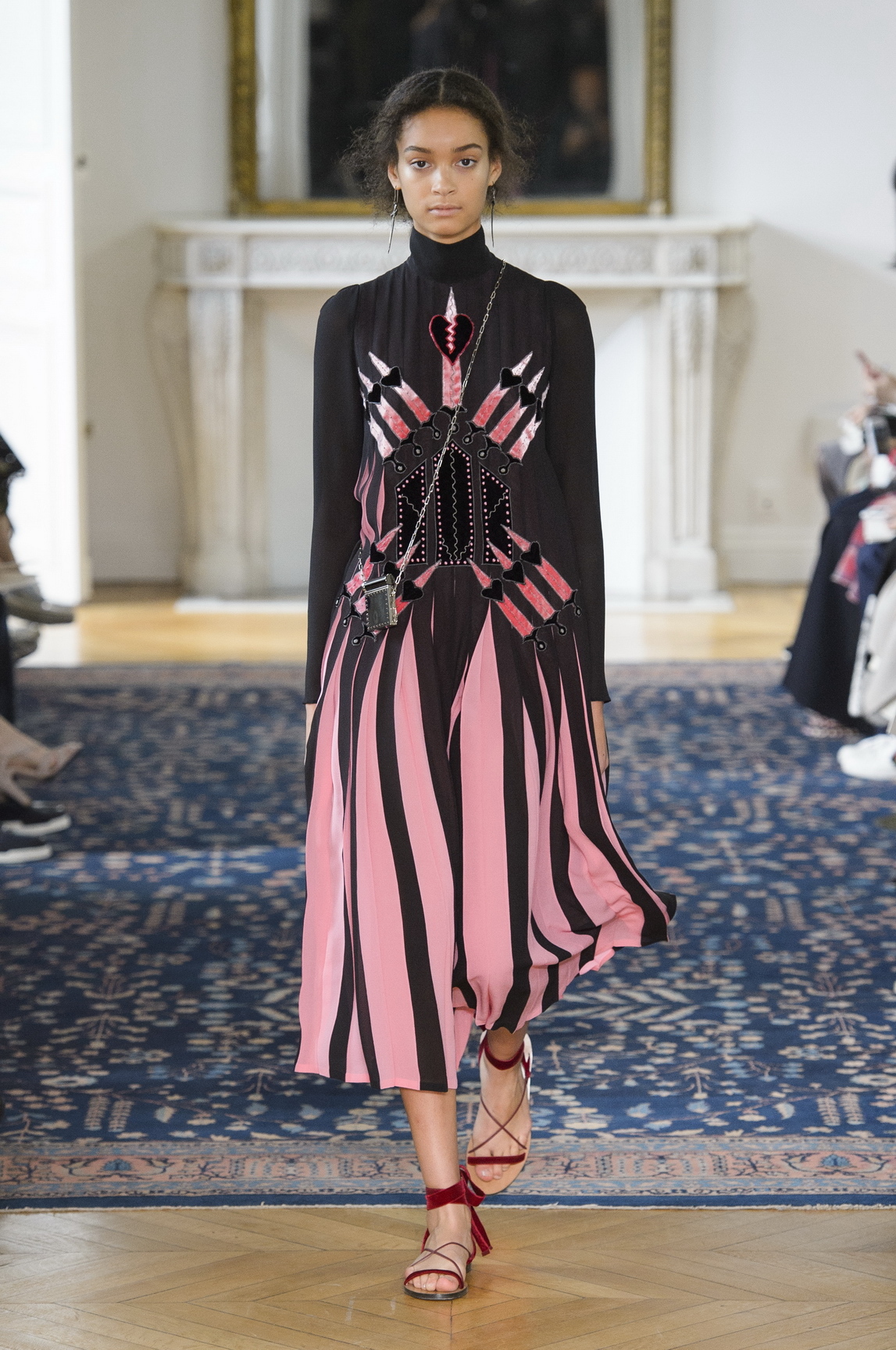
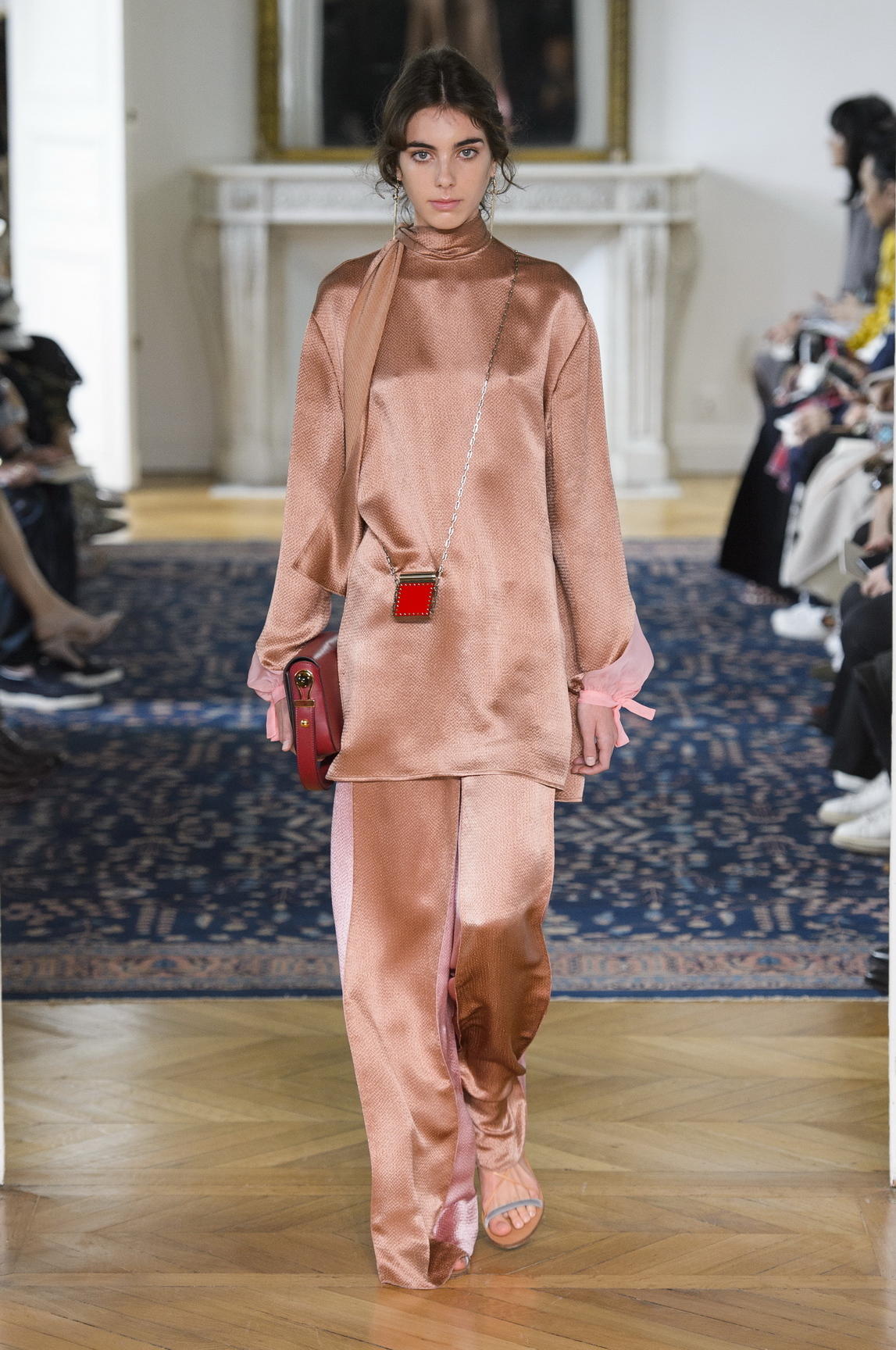
This season marked the conscious uncoupling of Valentino dream team Maria Grazia Chiuri — who showed her first collection for Dior on Friday — and Pierpaolo Piccioli, who had Valentino fans on the edge of their seats on Sunday afternoon, itching to see if Valentino would retain its ethereal glamour under the solo direction of Piccioli. Good news: it did. In fact, it seemed very familiar and that was a good thing. If it ain’t broke, don’t fix it. Piccioli handled his Valentino divorce with velvet gloves, drawing — as the duo always did — on historical and intellectual art references, from the concrete in motifs by Hieronymus Bosch reinterpreted by pink-haired punk pioneer Zandra Rhodes, to the more subliminal in Nietzsche’s musings on past and future. At first Piccioli gave his glamour a more contemporary edge, slightly more formal than the one Chiuri exercised in her first collection for Dior, but it soon turned into the stuff Valentino dreams are made of: delicate, almost glass-like floor-length dresses embellished with the heavenly confectionary the Valentino ateliers master like no else. This was the distilled Valentino glamour Demna Gvasalia saw as a boy getting lost in the pages of his first Vogue: the original fantasy of fashion. Glamour!
Credits
Text Anders Christian Madsen
